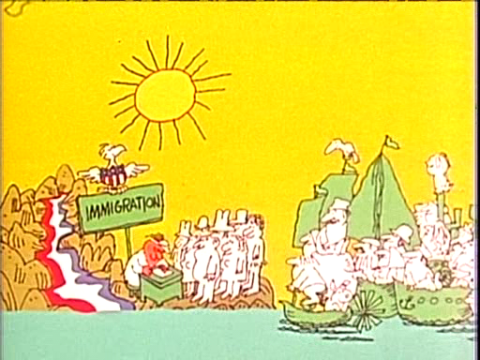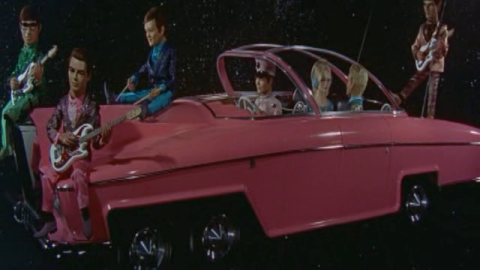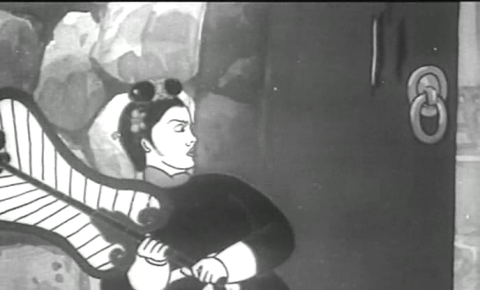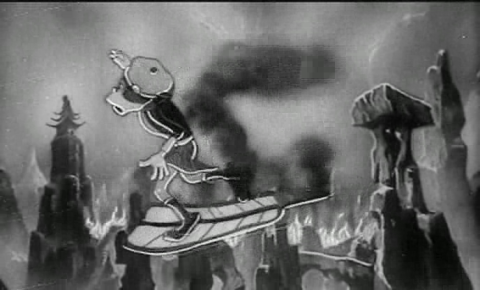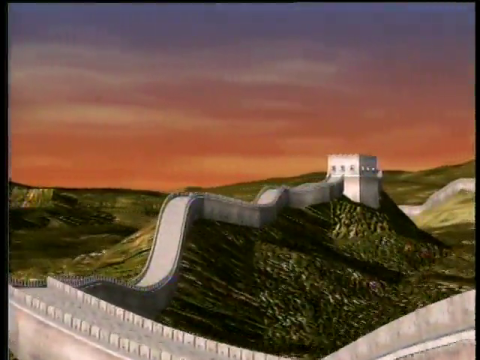The Internet Archive may be an absolutely fantastic site. Scope and depth are both tremendous, but they come at a price. The problem is finding what you are looking for. Or, sometimes, trying to determine which one of several available versions is the best. With the popular films, it is not unusual to find anywhere between five and ten different uploads. There is next to no information about source or resolution, and unfortunately the quality claims made by the uploaders do not always hold up to scrutiny.
Gulliver’s Travels is a good case in point. This is a classic animated adaptation created by Dave Fleischer, who had previously done Betty Boop and Popeye, and who was to participate in the creation of the Superman animated series. Gulliver’s Travels was one of only two feature films he made.

Jonathan Swift’s original Gulliver’s Travels contained four parts, but this film only covers the first part, about the adventures among the Lilliputians. To some extent it follows the original plot, in that Gulliver is shipwrecked on the island Lilliput. The inhabitants are first suspicious and try to tie him down, but when he intervenes on their behalf in a war, they treat him with friendliness. There are some changes in the overall plot, but the main difference is an added plotline about a romance between a princess of Lilliput and a prince of the rival Blefuscu kingdom.
Obvious influences in the production are not only Fleischer’s previous short films, but also Disney’s Snow White and the Seven Dwarfs. Many of the ordinary townspeople look more than a little like one of the dwarfs, and the Lilliput princess is more akin to Snow White than to Betty Boop.
Nine uploaded versions are known to me, not counting the original theatrical trailier. More may exist, as I have not searched all possible misspellings.
The trick is finding the best version. One thing you may want to compare between versions is length. In the case of Gulliver’s Travels, two variants of different lengths exist. One is about 72 minutes and one about 76. Assuming that we want only the more complete version, we can immediately dismiss three versions (1, 2, 3).
File size is another indication, but also tricky. Internet Archive’s classic interface (still available at the time of writing) had immediately available facts about this, but the new interface requires that you click “Show All” in order to get this important piece of information. File size depends on a number of factors and large size is no guarantee for a good copy. However, as a rule of thumb, a good copy of a feature-length film will not fit into less than, say, 500 MB, and even then it may be fairly heavily compressed, which may cause all sorts of weird artifacts in the images. Another two versions (1, 2) fall slightly below this limit, and are indeed of such low resolution that pixels are clearly visible when watching.
Next, it is a good thing to look at the comments for the remaining versions. Here we can find information that two more versions (1, 2) are “digitally restored,” but in a way that creates a fake widescreen (the original was in 4:3 ratio) by cropping and stretching the image. Also, the images have been blurred, so that many details are smeared. I nevertheless did download these versions to look for myself, and though the information is correct, the colours and sound of these versions are far superior to any other I have seen. So you may opt for one of these, if you do not care that you will miss some details from the original version.
Two versions remain, and now we are down to downloading and looking at them in order to judge which is best. They are about equal size, but it turns out that one has lower resolution. Thus, my own choice is definitely the final one. This one is not perfect. It has visible scan lines, sound could be better and it is pretty dark. So someone else may have another favourite.
While on the subject of Gulliver adaptations, there is another one at the Internet Archive that I also want to mention. Georges Méliès was a pioneer of cinematic special effects. Many of his films are available for download (I counted 88 at one point), but many are also of very low quality. One that is fairly good, however, is his version of the Gulliver tale, Le Voyage de Gulliver à Lilliput et chez les géants (1902). Beautifully hand colorated, this one is not to be missed if you have an interest in early literary adaptations or in early special effects.
The 1939 film is best enjoyed as close to the original as possible. Finding the best possible version at the Internet Archive can be hard work. Or you can just go to this blog. I always try my best to do the job for you and link to the most watchable version.

Gulliver’s Travels
Download link
Year: 1939
Running time: 1 h 16 min
Director: Dave Fleischer
Stars: Sam Parker, Pinto Colvig, Jessica Dragonette
Image quality: Good
Resolution: Medium (720×480)
Sound quality: Good
Best file format: MPEG4 (734 M)




